
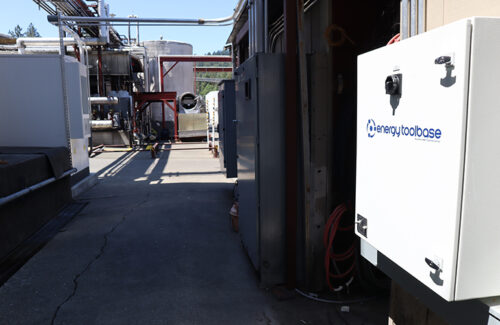
The Energy Tool Database and EPC company BPi located in Napa have successfully deployed three Energy Storage Systems (ESS) at Korbel Winery in Sonoma County, California. This installation is part of the winery's broader commitment to sustainable development and the integration of renewable energy into its operations. Energy Toolbase and BPi installed three BYD battery systems integrated with the ETB controller energy management system at the winery. The deployment of advanced energy storage systems aims to reduce demand costs, overcome grid limitations, and optimize energy usage under peak to valley electricity (TOU) billing rates in the region. The project also addressed the 980 kW AC export limit imposed by PG&E due to local substation restrictions, maximizing the use of renewable energy generation on site and achieving significant energy cost savings. BPi implemented a limited export control strategy using SEL-751 relays and inline contactors. Energy Toolbase manages BYD batteries in real-time through an ETB controller with Acumen AI, in compliance with the parameters set by BPi in SEL relays. These controls limit exports to the upper limit defined by the power company and dynamically schedule battery power to minimize peak demand for expensive facilities. Through the dynamic economic scheduling strategy of Acumen AI, the ETB controller optimizes the operation of batteries in real time to determine the most cost-effective scheduling strategy and maximize economic value without human intervention. The ETB controller manages energy flow, peak shaving and valley filling, reduces electricity costs, maximizes on-site energy generation, and provides energy for key equipment such as refrigeration, brewing systems, filling lines, and compressors. Energy Toolbase simplifies the procurement and commissioning process of BPi, ensuring smooth and efficient installation. The project installed 852 kilowatt solar panels on the roofs of four buildings and was equipped with three BYD CHESS devices, each with a capacity of 266 kilowatt hours and a total energy storage capacity of 798 kilowatt hours. This project is a powerful example of how smart software combined with modular energy storage can overcome complex grid limitations and provide immediate, quantifiable value, "said Kevin Muwei, Vice President of Operations at Energy Tools. Our collaboration with BPi has played a crucial role in successfully addressing complex interconnectivity requirements and deploying solutions that have brought significant savings to Korbel
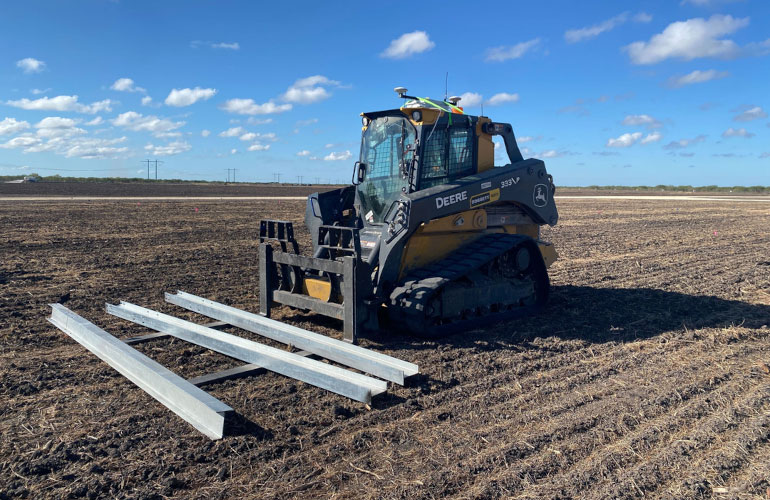
Civ Robotics has launched an artificial intelligence based material distribution system for the solar energy industry. CivNav accelerates solar energy construction by simplifying logistics, efficient pile and pallet placement, and advanced planning and workflow segmentation. We are seeing some very exciting technologies entering the industry to address long-standing inefficiencies, "said Tom Yeshurun, CEO and co-founder of Civ Robotics. For us, the most important factor is to keep it simple and easy to understand, so that everyone on site can benefit from new developments, regardless of their level of experience. As we continue to develop new robot systems, we ensure that innovation and user experience always go hand in hand. To use the CivNav system, the operator installs the sensor box on the machine of their choice and carries the CivNav tablet device onto the vehicle. CivNav is compatible with existing devices, it can be used with any slip steering or telehandler, and has been implemented in Baucat Takeuchi、 On site installation was carried out on Caterpillar and John Deere machines. Once installed, CivNav will guide the operator on how to distribute piles, solar panels, etc. The intuitive interface allows for precise placement with an accuracy of up to 5 centimeters, ensuring that every plan can be executed accurately. When users combine this precise placement with GPS enabled pile drivers, the team can directly skip the layout work. With the increasing use of GPS enabled pile drivers and the expansion of solar projects, eliminating steps like construction layout has become increasingly important. This is another crucial step towards automation in construction sites, which helps bridge the labor gap. Measuring and tracking construction site performance may be difficult, therefore CivNav's artificial intelligence analysis will automatically generate daily reports based on real-time data collected during operation. By providing detailed insights into productivity, output, working hours, travel distance, etc., managers can better identify bottlenecks and continuously optimize workflows as the project progresses. This type of information is crucial for better estimation and driving decisions to measure the success of changes. CivNav collaborates with the company's CivDot+robots to provide a complete autonomous solution for pile drivers with or without GPS. Civ Robotics helped us deploy over 300000 points using CivDots in three different projects, "said Jason Field, BOLDT project executive. When they showed us the CivNav development that eliminates the need for physical point layout in pile distribution, we knew we had to give it a try. After using it for a week, the on-site team praised it endlessly and asked if it could be used for other tasks on other machines

ABB has announced the completion of its acquisition of the Spanish power electronics business from Siemens Gamesa, initially announced on December 18, 2024. The financial terms have not been disclosed. The acquired asset portfolio includes wind conversion products for doubly fed induction generators (DFIGs), industrial battery energy storage systems (BESS), and large-scale solar inverters. This transaction brings about 400 employees, including key resources in Spain, India, China, the United States, and Australia, as well as two converter factories located in Madrid and Valencia. ABB has also signed a supply and service agreement with Siemens Gamesa. This acquisition increases ABB's total capacity of serviced wind converters by approximately 46 gigawatts and supports its profit growth strategy in the sports business sector. Gamesa Electric, with over 45 years of experience in power electronics, brings profound technical expertise and strong customer relationships in solar and renewable energy applications. By combining ABB's global influence with Gamesa Electric's product portfolio and expertise, the company is in a favorable position to capture the growing demand and accelerate the adoption of renewable energy worldwide, "said Daniel Gerber, Manager of ABB's Motion Control High Performance Business Unit Renewable Energy Business Line.
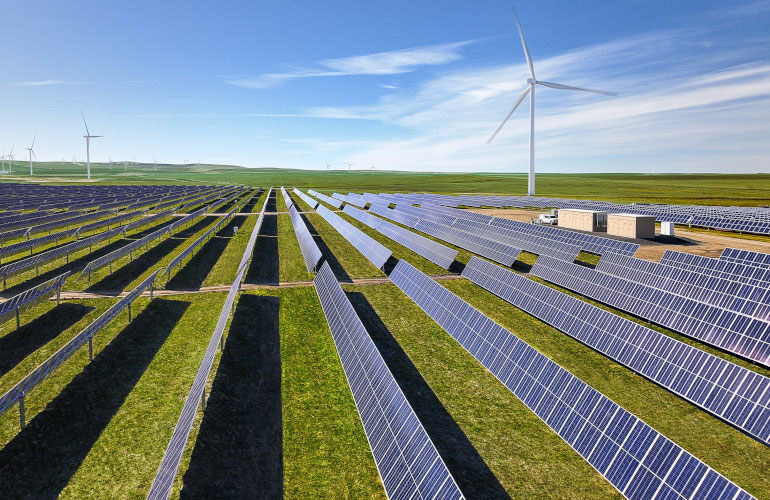
The latest "Electricity Monthly Report" released by the US Energy Information Administration (EIA) shows that solar power generation in September 2025 increased by 29.9% compared to a year ago and provided 9.7% of the country's electricity output in that month, compared to 7.6% in 2024. In the first nine months of 2025, large-scale solar power generation increased by 35.8% compared to the same period in 2024, while small-scale solar power generation increased by 11.2%. The combination of large and small solar power generation has increased by almost one-third (29.0%) and generated slightly over 9% of the total electricity generation in the United States from January to September (large: 6.85%; small: 2.16%), up from 7.2% a year ago. According to the SUN DAY Campaign's review of the data, the situation is as follows. For the third consecutive month, the large-scale solar power generation exceeded the national wind power generation by 4% in July, 15% in August, and 9% in September. Including residential systems, solar energy has consistently surpassed wind energy for five months and increased by over 40% in September. Similarly, so far this year (YTD), solar power generation has easily surpassed the electricity generation of hydropower stations nationwide (accounting for 5.5% of the total electricity generation), and has exceeded nearly 65%. In September alone, solar power generation exceeded twice the power generation of hydropower stations nationwide. In fact, in September and so far this year, solar power generation has exceeded the total power generation of hydropower, biomass, and geothermal. In the first nine months of 2025, wind power combined with large and small solar power provided 18.8% of the total electricity generation in the United States, compared to 17.1% in the first three quarters of 2024. In addition, the combination of wind and solar energy provided 15.1% more electricity than coal and 9.8% more electricity than nuclear power plants nationwide in the first nine months of this year. In fact, with the expansion of solar and wind energy, nuclear power generation has decreased by 0.1%. All renewable energy sources generated 8.7% more electricity between January and September compared to last year, and provided 25.6% of the total electricity generation in the United States compared to last year, instead of 24.2%. Renewable energy generation is now second only to natural gas, and natural gas power generation has actually decreased by 3.8% in the first nine months of 2025. The Trump administration's efforts to revive nuclear energy and fossil fuels have not been successful, "said Ken Bossong, executive director of the Sun Day Movement. The capacity of solar energy, wind energy, and battery storage continues to increase at a significant rate, surpassing natural gas, coal, and nuclear energy, and the gap is constantly widening

Valentin Software has announced a new version of its PV * SOL advanced software, which allows users to generate visually appealing customer presentations in PDF and DOCX formats after system planning is completed. This concise overview presents the most important data and results of the project, aimed at helping contractors win more deals. Another new feature includes expanded options for combining photovoltaic systems with thermal systems and battery storage. Heat pumps and direct heaters can now be flexibly connected to AC and DC coupled battery systems, making modeling of complex installations more realistic. PV * SOL premium 2026 also introduces individual electricity rates for each consumer. Users can allocate separate rates for specific load profiles, such as household loads, electric vehicles, or heat pumps. Each consumer will automatically display their own meter in the schematic diagram, and the corresponding rates will be seamlessly integrated into the economic analysis. The additional features of PV * SOL Premium 2026 include: · Updated climate data using Meteonorm 9 (revised data base, faster loading time) · JSON export of project data and simulation results for simplified processing in external CRM, ERP, or analysis tools · New air conditioning, home office, and elderly home load characteristics
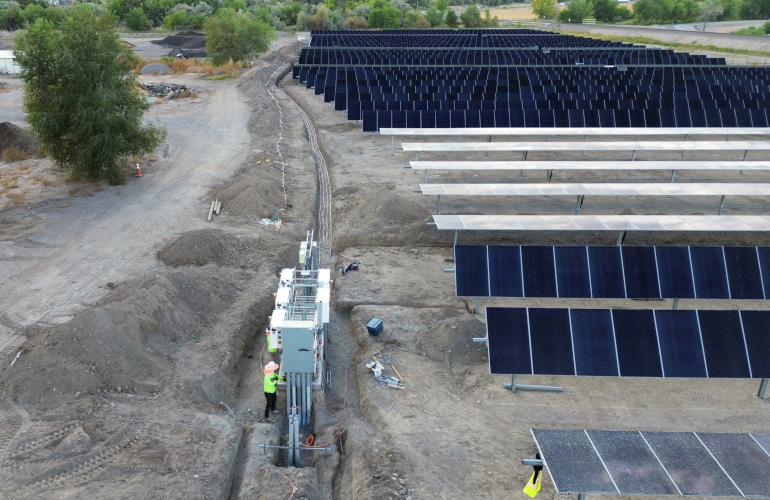
Sandhills Energy and the Nebraska Municipal Energy Agency (MEAN) are celebrating the completion of two solar projects in their 16 project community solar portfolios. These two projects are located in Delta and Fort Morgan, Colorado, and MEAN's supply areas include 60 communities in Colorado, Iowa, Nebraska, and Wyoming. The new 875 kW facility will offset some of the city's peak electricity demand in Delta and diversify the city's electricity mix. This array will enhance the resilience of the power grid and bring cost stability to residents and local businesses. This facility embodies Delta's commitment to our energy future, "said Adam Supps, Delta's municipal power manager. This device strengthens the local power grid in the delta and enhances our ability to manage energy costs for customers. The project was developed based on the specific needs of the delta, supporting our goal of providing reliable, sustainable electricity and long-term value to residents The 3.8 MW facility located in Ford Mog is one of the largest solar projects in MEAN's investment portfolio. The project is expected to generate sufficient electricity annually to supply 850 households, while providing benefits to the local area and economy through construction and ongoing operation. Ford Morgan City is proud to be part of this growing community network that is investing in renewable energy, "said Mayor Brent Nessins. Our city has a long history of innovation - from early irrigation reservoirs to the adoption of electric streetlights in 1906- and this solar project continues this tradition. It will help stabilize our energy costs, create local employment opportunities, and strengthen Ford Morgan City's commitment to responsible growth and sustainable development Sandhills Energy collaborated with MEAN and its member communities in 2021 to develop a portfolio of 15 solar installation projects in Colorado, Iowa, and Nebraska. More than half of these solar projects are now online, helping participating member communities generate some energy locally. The electricity provided by this combination can meet up to 5% of municipal energy demand, while reducing exposure to wholesale price fluctuations. This innovative collaboration supports the energy independence of the following communities: Colorado: Denver, Ford Mog, Wailai, and Yuma Iowa: Indiana Lowe, Sergit Bluff, and Waverley Nebraska: Aliance, Ainslie, Klet, Gelling, Empire, Pender, Pierce, Sidney, and Stuart
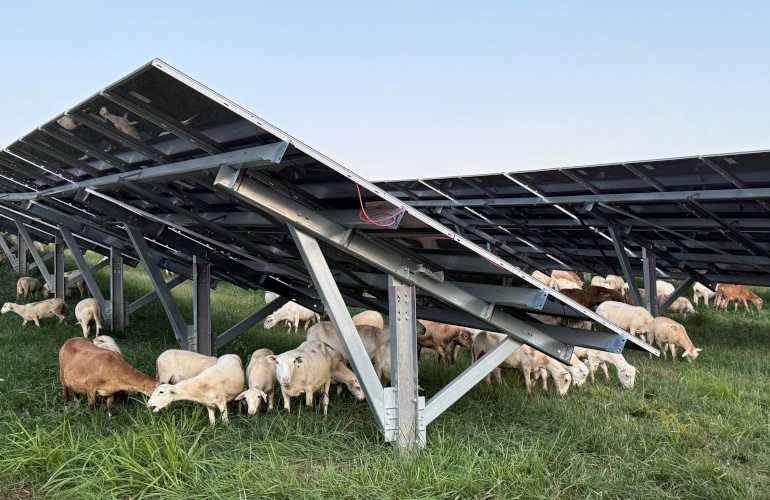
Mon Power, a subsidiary of FirstEnergy Corp., has introduced sheep for vegetation maintenance at a solar power plant adjacent to the Fort Martin coal-fired power plant in Maidsville, West Virginia. We are managing this website in an innovative way that combines renewable energy and agriculture to benefit our community, "said Dan Rossero, Vice President of FirstEnergy West Virginia Power Company. Solar powered grazing allows us to maintain efficient website operation while supporting local farmers and reducing our environmental footprint. By collaborating with sheep farmers and promoting solar energy, we are generating positive impacts far beyond the fence. The Fort Martin solar station, which will begin operation in early 2024, has been contracted by Mon Power with Sivic LLC, a solar graters company led by Nate Dean and Luci Mosesso, located in Pocahontas County. Approximately 350 sheep have grazed the entire autumn season at this location. Sivic moves his flock on the property every four to six days and uses temporary fences to ensure that the vegetation on the entire property is consistently trimmed. As vegetation growth slows down, sheep will stay on farms in Pocahontas County during winter and return to solar powered locations in spring. This is a way to regenerate and manage vegetation on a site that serves as a renewable energy source, "Dean said. The 18.9-megawatt Martinburg solar station is the first site developed as part of the Mon Power and Potomac Edison solar program, which involves developing solar projects on brownfield or affected industrial properties. At two additional sites in Marion County and Berkeley County, these two companies have 30 megawatts of solar capacity. Through the solar energy program, Mon Power and Potomac Edison customers in West Virginia who support renewable energy can purchase Solar Renewable Energy Certificates (SRECs) - certificates that represent the environmental properties of solar energy and prove that solar energy is generated on the buyer's half.
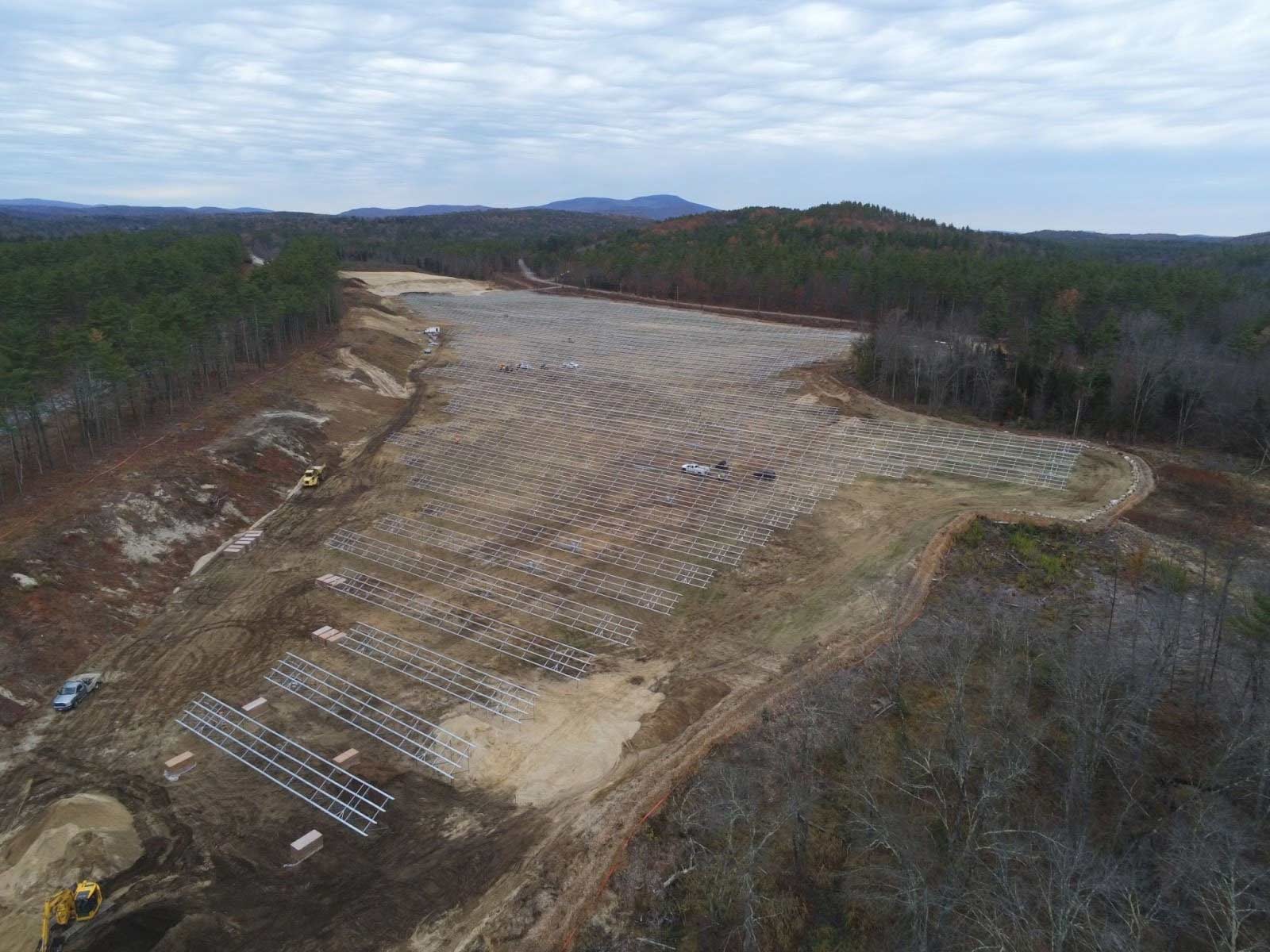
Encore Renewable Energy has started construction on a 4.99-megawatt impoverished plain solar project located in Warner, New Hampshire, which is a community solar project built on a former gravel pit. The project will provide affordable clean energy to 11 communities in New Hampshire through the Community Power Alliance of New Hampshire (CPCNH). New Hampshire has great potential in utilizing energy solutions, and Poverty Plains Solar is proof of that possibility, "said Chad Farrell, founder and co CEO of Encore Renewable Energy. From lowering electricity prices to revitalizing a previously developed gravel pit, this project has contributed to a stronger and more affordable energy future for New Hampshire. ” Once put into operation, the array will provide electricity bill savings in the form of cash payments to participating public entities in 11 CPCNH member communities through New Hampshire's group net metering program. When completed, this array will become the largest solar project in New Hampshire. This project is a significant victory for our membership community, generating nearly $5 million in membership benefits that will help us provide lower and more stable electricity prices, "CPCNH project and project manager Mark Bolinger added. Communities across the state hope to utilize locally generated renewable energy, and this project proves that this is possible. Encore also celebrated a $20000 community impact donation at a recent event, which will support Warner's safety and aesthetics through improvements in plants and infrastructure. This donation is part of Encore's newly established Community Impact Program, which aims to support community initiatives in every construction project while also contributing to the company's broader mission of becoming a trusted partner for all stakeholders involved in the projects they develop and deliver.
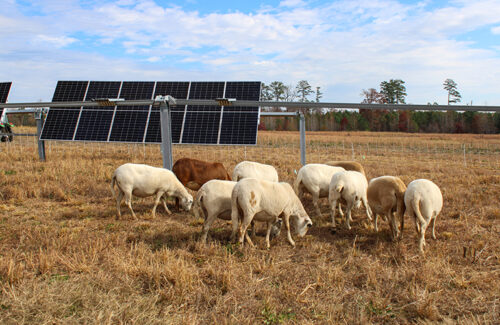
North Carolina State University and Nevados, a manufacturer of single axis solar trackers, held a ribbon cutting ceremony on Wednesday to launch a project and facility for researching and implementing agricultural photovoltaics. The North Carolina State University Agricultural Photovoltaic Complementary Training Base is the first of its kind in the southeast, where students and solar energy professionals can learn about the practice of agricultural photovoltaic complementarity and install solar energy technology on steep terrain using Nevados' patented tracking technology. Agricultural photovoltaic complementarity refers to colonizing solar panels and agricultural activities on the same land, including food and livestock production. This new solar training center is a testament to the power of partnership, "said Chris Frey, Vice Dean and Head of Research and Infrastructure at the School of Engineering. This is a stunning interdisciplinary collaboration between North Carolina State University's Clean Energy Technology Center, Department of Animal Sciences, and Nevados, a manufacturer of solar tracking systems. This makes North Carolina State University a sustained leader in energy and agricultural education for students and professionals in their careers. ” Yesterday's release included a preview of the university's new agricultural photovoltaic training, titled 'Agricultural Photovoltaic in Action: Improving the Operation and Maintenance of Ranch Integrated Solar Stations'. This course will be launched in the spring of 2026, providing solar professionals with the necessary skills for navigating through grazed solar sites, including working with electric fences, sheep protection animals, and sheep based vegetation management. It also offers strategies to simplify operations and maintenance, as well as promote collaboration between solar operators and grazing professionals. Grazing sheep on solar farms provides many benefits for the solar and sheep industry, "said Dr. Andrew Weaver, assistant professor of animal science. These benefits include reducing the need for mowing and more effective vegetation management, protecting farmland, improving public image, and providing career opportunities for local sheep producers. North Carolina State University's agro solar complementary training base will provide valuable opportunities to train our students and farmers to master the best management methods for solar powered grazing. This training base is not just about solar energy; it is pioneering the future of sheep production - a more resilient, productive, and profitable future for North Carolina and the world. The training venue includes three rows of Nevados' TRACE all terrain tracking system and three types of solar modules, which will be used for agricultural solar complementary education, especially solar grazing, as well as solar technician training through the NC Clean Energy Technology Center, Nevados, and Animal Science Department.
Categories
New Products
Tin Roof Rapid Solar Mounting System with Hanger Bolt Read More
Residential Small Solar Easy Bracket Kit for Home Balcony Read More
Automatic Single Pile Solar Tracker with 10 PV Panels Read More
Angle Adjustable Aluminum Easy Solar Panel Bracket for Garden Read More
Intelligent Single Post Dual Row Solar Tracking System Read More
5000ES Solar Off-Grid Energy Storage Inverter Supplier Read More
Multi Drive Double-Sided Single Axis Tracker System Read More
© Copyright: 2025 Xiamen Wintop New Energy Tech Co., Ltd.. All Rights Reserved.

IPv6 network supported
Friendly Links:
Integrated Solar System